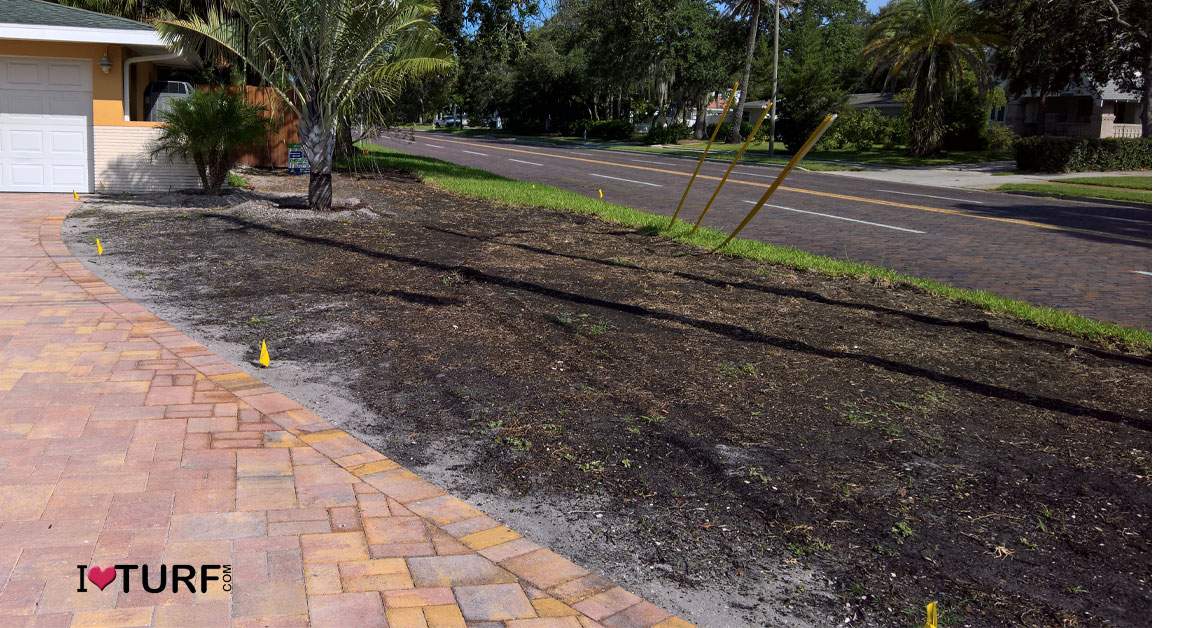
Step One: Irrigation
Step one to a great lawn is a great irrigation system. It must have a modern internet-connected timer, a powerful pump, remote-controlled valves, and the right pipe sizes. The layout of the heads must create overlapping spray patterns over the entire lawn – Head A must reach Head B and Head B must reach Head A and C and Head C must reach Head A and B, so on and so on.
Turf Tip: Don’t wait until the sod arrives to water your lawn. Turn on the irrigation now and run it like you have the greatest lawn in the county until the sod arrives. This will bring the soil to life. A moist living soil is the best planting medium for sod.

Step Two: Prepare
Step two is the proper preparation of the area to be sodded. If it is bare soil with no existing lawn, just level the bare soil and plant the sod. If you are renovating an existing lawn, the best way to prepare for sod is to remove and replace. This is done with a sod cutter and a dumpster. Set the sod cutter to 1 - 2” deep and cut the existing lawn. Remove the old lawn and throw it in a dumpster. If done correctly, the area to be planted will be ready for sod. Level to remove footprints and place the sod directly on the soil.
Turf Tip: The primary goal of preparing your lawn for sodding is to have soil to soil contact – where the soil side of the sod is in contact with the soil of your lawn. The best way to get the soil to soil contact is to strip the existing weeds and such from your lawn with a sod cutter. This not only exposes the soil for soil to soil contact but often leaves a level surface.

Step Three: Plant
Planting sod is as simple as placing the sod pieces edge to edge and trimming borders. No special technique or tips here – just get the sod on the ground, green side up. There are about 450 pieces of sod per pallet and sodding goes quickly if you get in a quick-paced rhythm of picking up sod and throwing it into place – and set your mind to doing just that - 450 times!
Step Four: Water
Water, water, water! The number one determining factor for the success or failure of your new lawn is water (If you don’t have an irrigation system, see step one). The goal is to not let your lawn dry out during the first 30 days. Most drying occurs during the day. Therefore, you should water during the day. I recommend watering at an hour after sunrise and again 8 - 10 hours later.
Turf Tip: You cannot kill your lawn with water, but it will die in hours from the lack of it. If you are going to err, err on the side of a generous amount of water.
Step Five: Fertilizers and Mowing
The sod comes from the sod farm in good shape. There is no need to fertilize. It needs water more than anything else. From May through June it would be wise to start lawn spraying within a week of the sod being laid to protect against sod webworms. Other times of the year start a good lawn spraying program within 4 – 8 weeks.
Allow the sod to root firmly in the soil before mowing. When you do mow, raise the mower as high as it will go and then mow. The higher you mow your lawn, the better your lawn will be.




